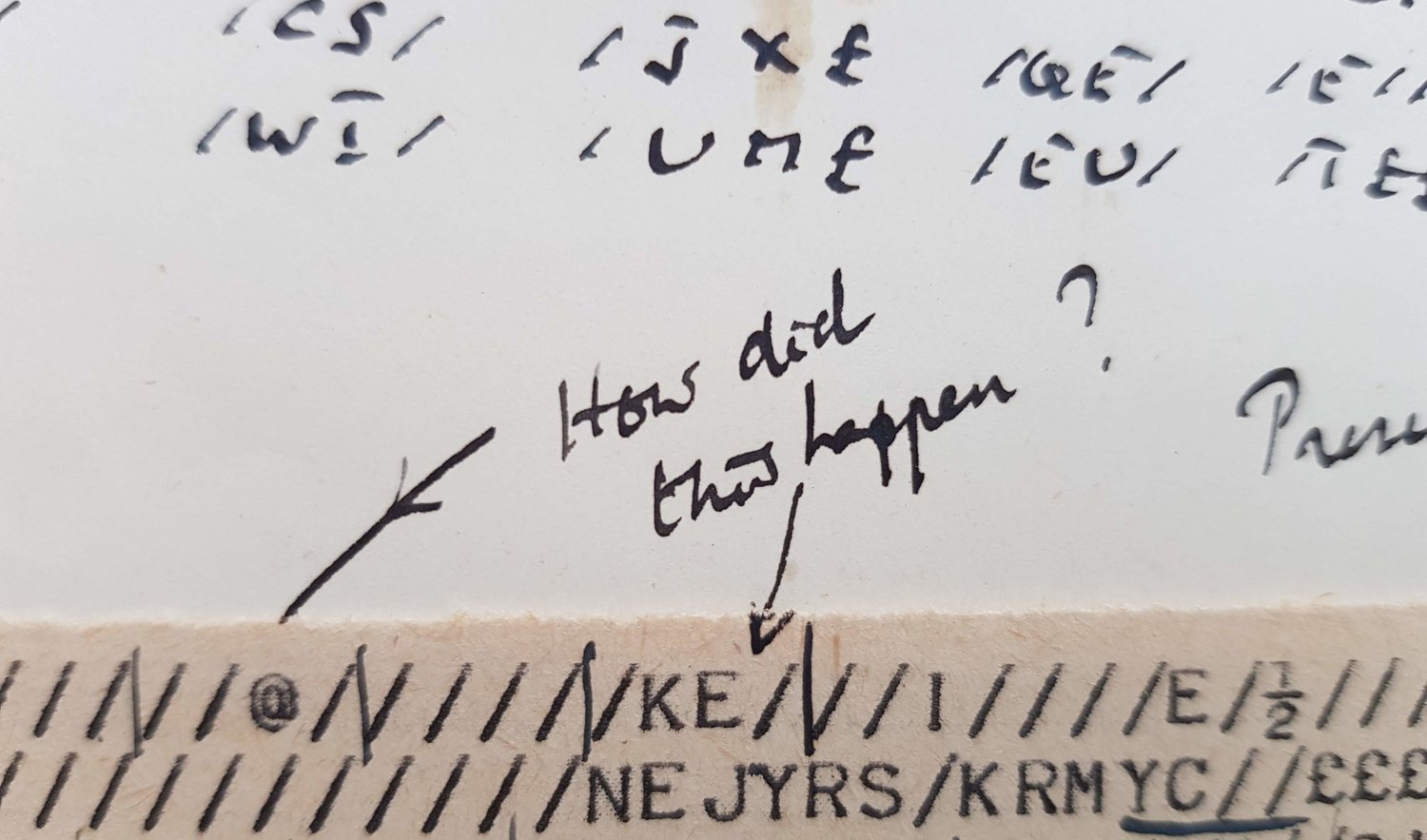My delight in archives continues unabated. Yesterday I discovered an eyewitness account of what it was like to encounter the world’s first computer memory in action. As far as I know it’s not been published before, so here’s a small (and copyright-reasonable) excerpt. It’s about an encounter with the Manchester Mark I in the summer of 1949:
I spent a day with Turing and Jones in Manchester. They use a tube that looks like a cathode ray, on which they write the things to be remembered as so many jots or places for jots — call them tittles — arranged in columns and in rows. The half-life lived in the traces in such a tube is less than one minute. Consequently, whatever is to be kept longer than that time must be read, erased, and re-written to complicate the memory trace. The machine therefore works by making two kinds of trips over its written record and it makes these alternately. In one trip all it does is to read, erase, and re-write whatever is to be remembered. In the second trip it puts in or takes out, in other words, changes what ls stored in the memory as the problem requires. To account for human memory one must, in short, suppose something comparable; namely some process in which traces beget others like themselves at a rate sufficient to result in asymptotic approaches to something other than zero. (From a letter dated 20 Oct 1949 from Warren McCulloch to Molly Harrower in the archives of the American Philosophical Society, Mss.B.M139 Box 10, copyright the estate of Warren McCulloch).
Warren and Molly were both indifferent-fair poets on the side from their day jobs as neurologist and psychologist respectively, and for a period had a scientist-crush on each other, which drops into their workaday letters a delightfully creative playful tone. It’s fascinating to see McCulloch’s reaction to the brand new concept of a storage bit. He gropes for words for the physical appearance — a jot, or a tittle? If we’d adopted his choices would we now feel subtly different about bits and bytes, I wonder? And immediately he starts to try and see how he can use the technology as a model for human memory, which looked like the most promising approach to understand thought at the time, even if we are still waiting for an answer on that. (My book has a tiny bit more on the context for this, and the rival American and British approaches to cybernetics, but the authoritative text is Margaret Boden’s Mind As Machine.)
I can’t be definite who Jones was. but the most likely must be RV Jones, then head of ‘scientific intelligence’ for the British government, which is one more piece of evidence for the very close interest indeed that GCHQ was taking in the Manchester Mark I, and also perhaps of trans-Atlantic collaboration in that area. And the silence about the machine’s engineers is also, weaker, evidence, that Williams and Kilburn were either not aware of or not recognised as leading that defence role for the machine. Perhaps for that reason, and certainly for others, the engineers developed a distinct chip on their shoulders about the theoreticians. In this case they would be justified: wherever the credit goes for electronic computing as a whole, Turing and Jones had nothing to do with the central Manchester achievement of a working memory.
(Update 28 May 2019. Simon Lavington correctly points out that there is no documentary evidence that it was GCHQ specifically taking an interest in Manchester computing in 1949 and that in his judgement they were more interested at the time in other developments. Certainly RV Jones is not normally thought of as acting for GCHQ. Phil Husbands meanwhile suggests that Jones may more likely be John Lennard-Jones, a mathematician and computational chemist who was then in a senior role at the Ministry of Supply. Owen Holland suggests instead it was Eric Malcolm Jones, a senior GCHQ figure. There is a limit as to what we can infer from the abundance of Jones, but that there was defence interest of some kind still seems overwhelmingly likely. And by 1952/3 at the latest GCHQ had a Ferranti Mark I* on their shopping list.
Also, there’s more on the interaction of McCulloch with Turing and the British cyberneticians in Husbands and Holland 2012)
Molly Harrower. Copyright holder unknown. I think this is from a photograph held by the Archives for the History of American Psychology, Akron,Ohio.


